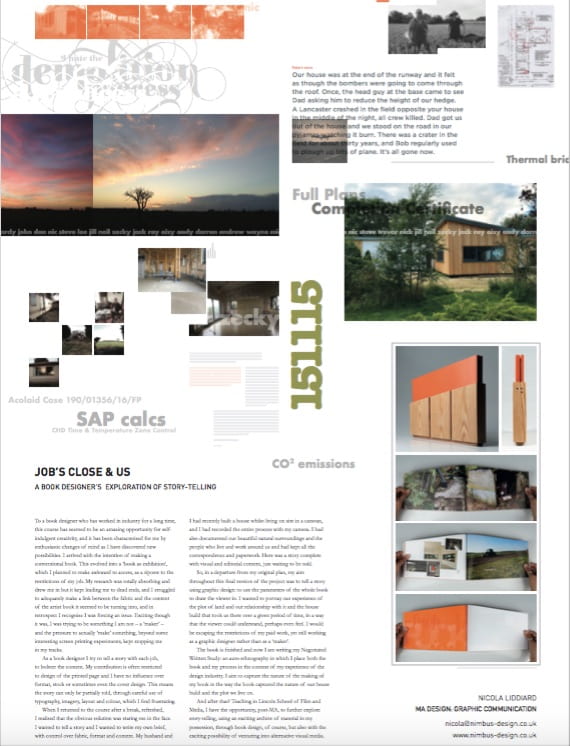Teaching graphic design within BA (Hons) Media Production here at the University of Lincoln has given me the perfect opportunity to study for an MA in Design. It has taken me a long time, but, sadly, now the end is nearly in sight. I completed my Major Practical Project last summer and am now working on the final piece, my Negotiated Written Study.
My Major Practical Project was exhibited in the recent Festival of Creativity degree shows, and with that over I am now hoping to introduce my work to a wider audience of colleagues. You can see the poster I designed as part of the show here.
I have been a freelance book designer working for large trade publishing houses for many years, and the way the system is set up has often meant, in design terms, being unable to work on the whole package. It is quite normal, for example, to design the interior of a book where someone else has designed the cover: many large publishers have an in-house cover team, and they regard the cover as merely a sales tool. Likewise, I have seldom had input into format, extent or materials: these are budgetary decisions made before the work is delivered to the designer. And of course I am always working with someone else’s words. This I have found increasingly frustrating – I would like creative input into the whole book, not just a part of it.
So, for my Major Practical Project I decided to make my own. I wanted to challenge myself creatively in a way that I hadn’t been challenged for some time. The brief I set myself was to work without a client and with only the tiniest audience, to set my own rules and to give myself full creative freedom. For a graphic designer, working without a client, a given brief or an audience is something of an anomaly.
I had a story to tell and various tools to help me tell it: above all choice of materials and format, but also freedom with words, typography, colour, style, imagery, grids and layout.
The story was of my experience of the plot of land I live on, from a number of different perspectives, or editorial threads, with each thread designed to have a very different style and ‘feel’. The threads were ultimately woven together to make the story and to convey an atmosphere.
In the event, the practicalities of production imposed restrictions. For example, as the book grew to 252 pages I decided I certainly didn’t have the time or skill to print the whole book myself, which had been my original intention, so I sourced a printer who could do what I wanted at a price I could afford. I then worked closely with the printer to insert into the book pages that I had printed myself. Both the budget and my specific requirements had implications on the method of printing, the materials available to me and the form of the cover – it was impossible to produce the book I wanted without compromise.
Despite these restrictions, every decision was still made by me, from the shape of the book to the colours and typefaces used, and each design decision related directly to the heart of the story – and I was happy with both the creative experience and the outcome. I have been reminded though that to be a graphic designer is to accept less than full creative freedom. We are problem solvers, we deal with production processes and we seldom work in isolation.

